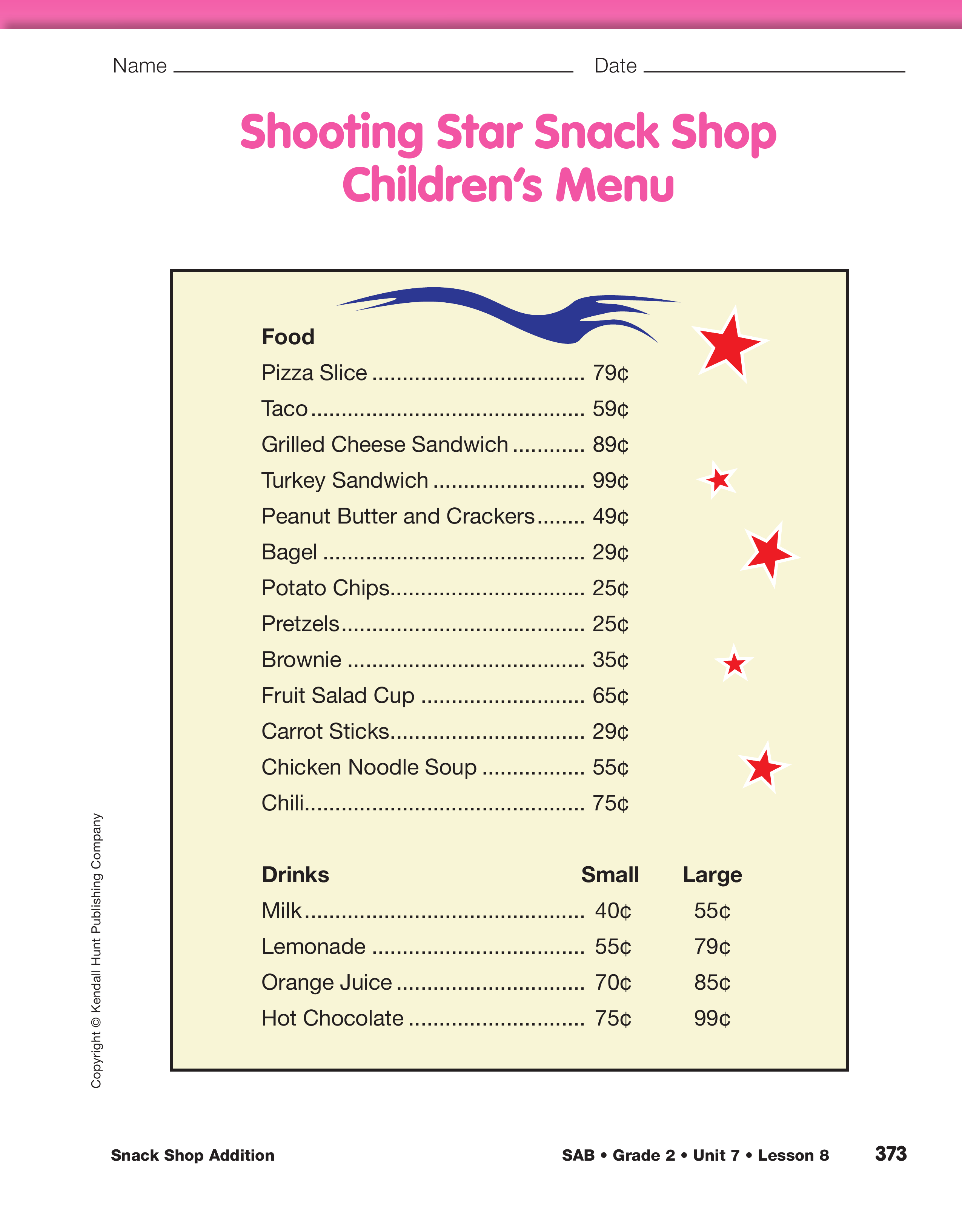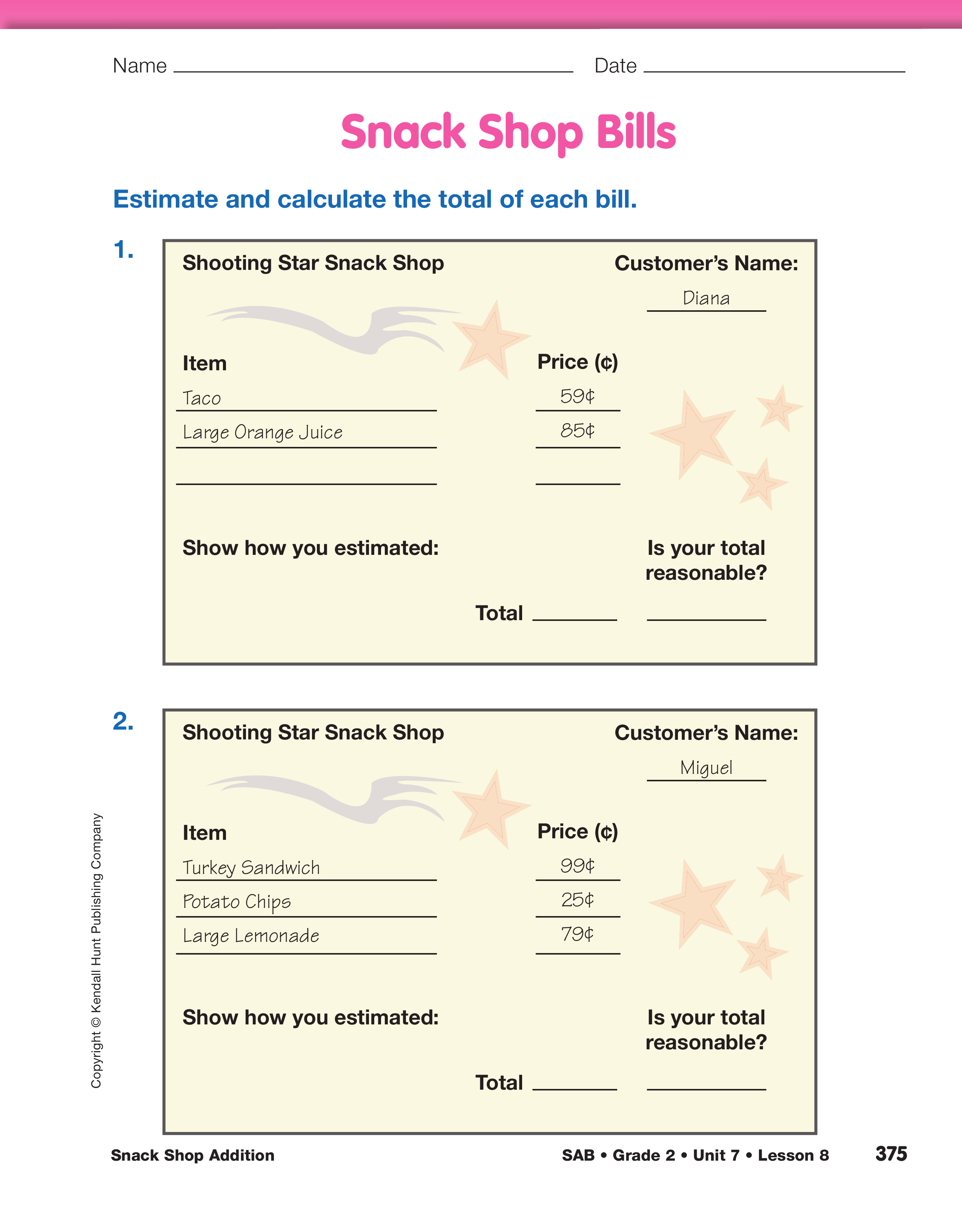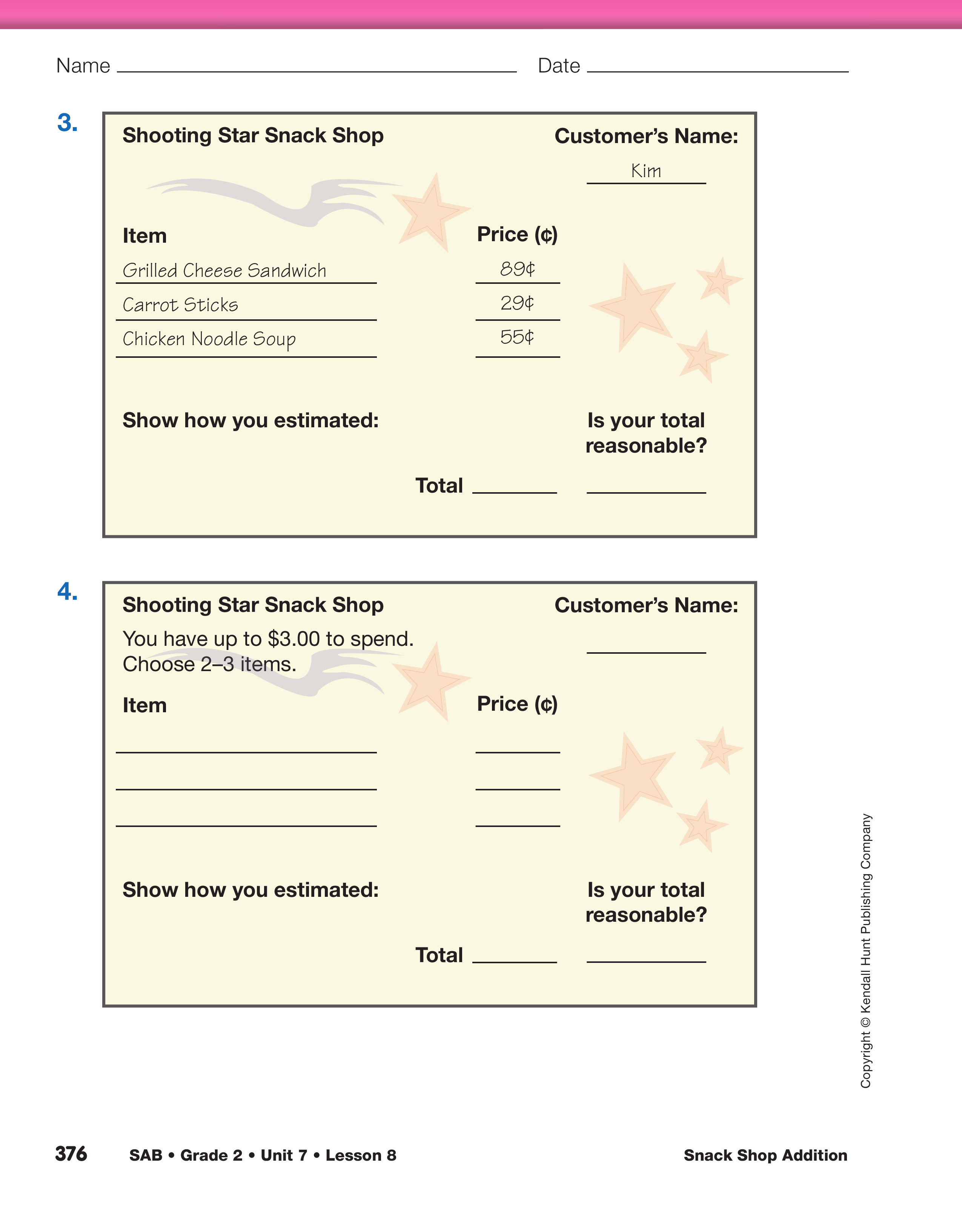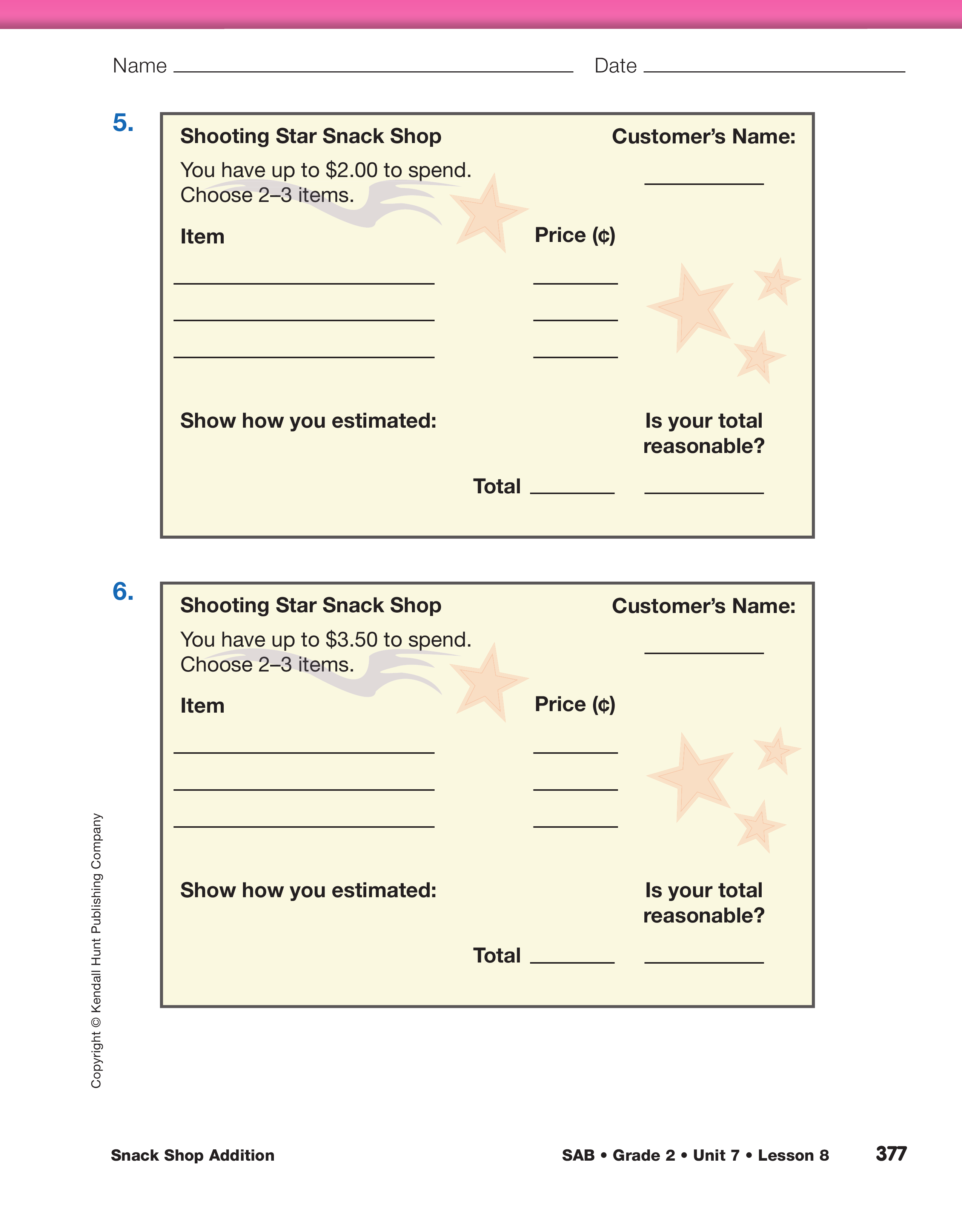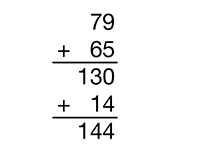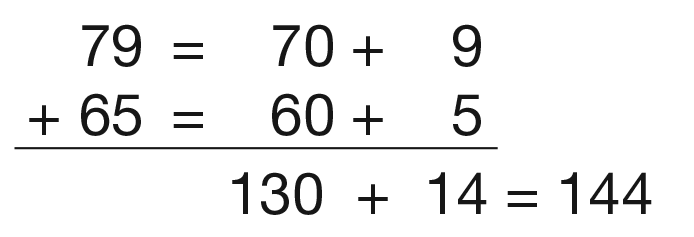Snack Shop Addition
Est. Class Sessions: 2Developing the Lesson
Review Addition Strategies. Display the Addition Strategies Menu from the Student Activity Book Reference section. Write the following three problems on the board:
| 25¢ | 29¢ | 85¢ |
| + 25¢ | + 56¢ | + 30¢ |
Ask:
Have students explain their thinking and demonstrate how they would solve one of the problems a
particular way. Students may respond that they can
solve 25¢ + 25¢ in their heads because they think
about quarters. Some may prefer to use base-ten
pieces or paper-and-pencil strategies to solve
29¢ + 56¢.
For 85¢ + 30¢, a student could start at
85 on the 200 Chart, and count three rows to add 30.
Or start at 85 and take three hops of ten on the
number line.
Estimate and Solve Addition Problems. Display the Shooting Star Snack Shop Children’s Menu page from the Student Activity Book.
Ask:
Tell students to estimate, rather than find the exact sum. Students can use many techniques to estimate that they have enough money to buy the two items. Encourage students to share their estimation strategies. Try to select a variety of estimation strategies.
Next, ask students to find the total cost of 79¢ + 65¢ using any strategy. As they work, circulate and look at students’ solution strategies so you can select a variety to share.
Ask:
Direct students to the Snack Shop Bills pages in the Student Activity Book. In Questions 1–3, students will look at the orders on the bills. They will first estimate the total cost and then find exact sums using both mental math and paper-and-pencil methods. Encourage them to refer to the Addition Strategies Menu in the Student Activity Book Reference section or to use their version from Lesson 6. Remind students to deter- mine if each answer is reasonable before going to the next bill. The prompt, “Is your total reasonable?” appears on each bill.
Use the Shooting Star Snack Shop Children’s Menu. Assign Questions 4–6. Students will fill in the remaining bills. These bills provide a limit as to how much money to spend. Students will choose 2–3 items from the menu and fill in the items on the bill along with the price. Before calculating, students should give an estimate that will help them determine if they have enough money. Finally, students will find the total cost and then determine if it is reasonable.
Students may work in pairs. One student may choose what he or she would like to order and estimate the cost. The other student can record the lunch order and then figure out the total cost. They can discuss the reasonableness of the total together.
Discuss Tools and Solution Strategies. Upon completion, provide an opportunity for students to share their solution methods. Talk about both estimation and addition strategies. Try to choose volunteers who can share a variety of strategies including all-partials, expanded form, and some mental math strategies.
Questions to ask include:
Distribute the calculators and review the keystrokes for addition if necessary. Have students use their calculators to check their classmates’ answers. See Content Note.














